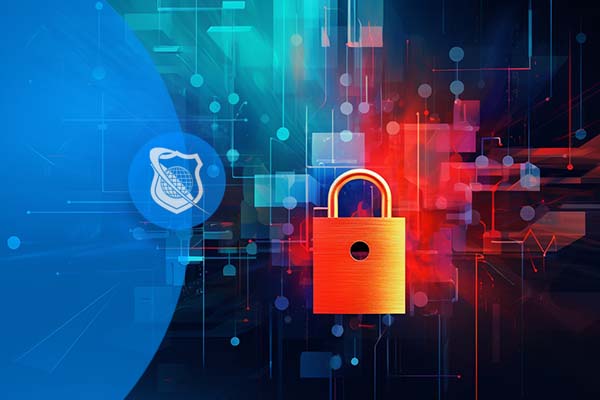Securing your home WiFi network is essential to protect your personal data, prevent unauthorized access, and enhance your privacy. Let’s dive deeper into each of the recommendations and explain exactly how you can implement them to lock down your WiFi network.
1. Change Default Router Settings
Why: Most routers come with default login credentials like “admin/admin” or “admin/password,” making them a prime target for hackers. Changing these credentials immediately strengthens your network security.
How:
- Open a browser and enter your router’s IP address (usually something like
192.168.1.1 or 192.168.0.1).
- Log in using the default credentials (these can usually be found on a label on the router or in the router’s manual).
- Go to the “Administration” or “Settings” section.
- Change the default username and password to something more secure. Use a combination of letters, numbers, and symbols, and avoid easily guessable words.
2. Enable WPA3 Encryption (or WPA2 if unavailable)
Why: WPA3 encryption is the latest and most secure wireless encryption standard, making it harder for attackers to decrypt your network traffic. If your router doesn’t support WPA3, WPA2 is the next best option, as older standards like WEP are easily broken.
How:
- Log in to your router’s admin page as explained above.
- Navigate to the “Wireless” or “Security” settings.
- In the encryption or security section, select WPA3 (or WPA2 if WPA3 isn’t available).
- If WPA3 isn’t supported, make sure to choose WPA2 and never WEP, as it is insecure.
- Save the settings, and your WiFi devices will be prompted to reconnect with the updated security.
3. Update Your Router Firmware Regularly
Why: Manufacturers release firmware updates to fix security vulnerabilities. Keeping your router’s firmware updated ensures that you’re protected from newly discovered threats.
How:
- Access your router’s admin page.
- Look for a “Firmware Update” or “Software Update” option in the menu (this is often under “Administration” or “Advanced Settings”).
- Some routers have an option to check for updates automatically, while others may require you to download the latest firmware from the manufacturer’s website and upload it to the router.
- Follow the prompts to install the update and restart the router if necessary.
4. Create a Guest Network
Why: By using a guest network, you can isolate your main devices from your guests’ devices, ensuring they don’t have access to your home network’s sensitive devices like smart TVs, computers, or printers.
How:
- Log in to your router.
- Find the option to create a guest network in the “Wireless” or “Guest Network” settings.
- Name the guest network something different from your primary network.
- Set up a separate, strong password for the guest network.
- Enable “Guest Isolation” if your router supports it. This feature keeps devices on the guest network from interacting with each other or with your main network.
- Save the settings.
5. Disable Remote Management
Why: Remote management allows you to access your router settings from outside your home network, but it also exposes your router to potential attackers. It’s best to disable this feature unless absolutely necessary.
How:
- Go to the “Administration” or “Remote Access” section of your router’s admin panel.
- Find the setting for “Remote Management” or “Remote Administration.”
- Disable it to ensure that no one can log in to your router from outside your local network.
- Save the changes.
6. Use a Strong, Unique WiFi Password
Why: A strong WiFi password prevents unauthorized access to your network. Using weak or common passwords makes it easy for hackers to brute-force their way into your network.
How:
- Go to your router’s wireless security settings.
- Set a strong password for your network. A good password should be at least 12 characters long and include a mix of uppercase and lowercase letters, numbers, and special characters.
- Avoid using common words, phrases, or anything easily guessable like your name or birthdate.
- Save the changes, and you’ll need to reconnect your devices with the new password.
7. Turn Off WPS (WiFi Protected Setup)
Why: WPS is a feature designed to make it easier to connect devices to your network by pressing a button or entering a PIN. Unfortunately, this convenience comes at the expense of security, as WPS can be exploited by attackers.
How:
- Access your router’s settings.
- Go to the “Wireless” or “WPS” section.
- Disable WPS (look for a checkbox or toggle switch).
- Save the settings. If you have connected any devices using WPS, they will remain connected, but no new devices can use WPS.
8. Hide Your SSID (Optional)
Why: While hiding your network’s SSID (the name of your WiFi) won’t stop determined attackers, it can discourage casual users from trying to connect. It can also reduce interference in environments with multiple networks.
How:
- Log in to your router.
- Navigate to the “Wireless” or “SSID Broadcast” section.
- Look for an option to disable “SSID Broadcast” or “Hide SSID.”
- Once disabled, your WiFi network will no longer show up in the list of available networks, though devices can still connect by entering the SSID manually.
9. Monitor Connected Devices
Why: Monitoring connected devices allows you to detect any unauthorized access. By regularly reviewing the devices on your network, you can catch potential threats early.
How:
- Go to the “Attached Devices” or “Device List” section of your router’s admin page.
- Review the list of connected devices. You’ll see each device’s name, IP address, and MAC address.
- If you notice any unfamiliar devices, you can block them by using your router’s “MAC Address Filtering” or “Device Block” option.
- For added security, consider limiting the number of devices that can connect to your network at any one time.
10. Use a VPN
Why: A VPN encrypts your internet traffic, providing an extra layer of security. This is especially useful when using public networks, but can also help at home by masking your online activities from prying eyes.
How:
- Sign up for a reliable VPN service.
- Download and install the VPN app on your devices.
- Configure the VPN to automatically start whenever you connect to the internet. This ensures that all of your traffic is encrypted and your IP address is hidden.
- For more advanced users, some routers allow you to configure a VPN directly on the router, ensuring that all devices on your network are protected by the VPN.
Final Thoughts
Securing your home network doesn’t have to be complicated. By following these steps, you can protect your WiFi from unauthorized access, safeguard your devices, and ensure that your personal data remains private. With a little effort, you can significantly reduce the risk of cyberattacks and enjoy a safer online experience.
Why should I change the default router settings?
Default router settings, including the username and password, are widely known and can be easily accessed by hackers. Changing them adds an extra layer of security, making it harder for unauthorized individuals to take control of your network.
How do I enable WPA3 encryption on my router?
To enable WPA3 encryption, log in to your router’s settings, usually by entering your router’s IP address in a browser. Navigate to the “Wireless” or “Security” settings and select WPA3 as the encryption method. If WPA3 is unavailable, choose WPA2.
How often should I update my router firmware?
Router firmware should be updated regularly, at least once every few months, or whenever a security vulnerability is identified. Check for updates manually through your router’s settings or enable automatic updates, if available.
What is the purpose of creating a guest network?
A guest network keeps your main devices, such as laptops and smartphones, separate from visitors’ devices. This prevents guests from accessing your personal data or infecting your network with malware.
Should I disable WPS on my router?
Yes, it’s recommended to disable WPS (WiFi Protected Setup) because it can be easily exploited by attackers to gain unauthorized access to your network. Disabling WPS adds another layer of security to your home network.










